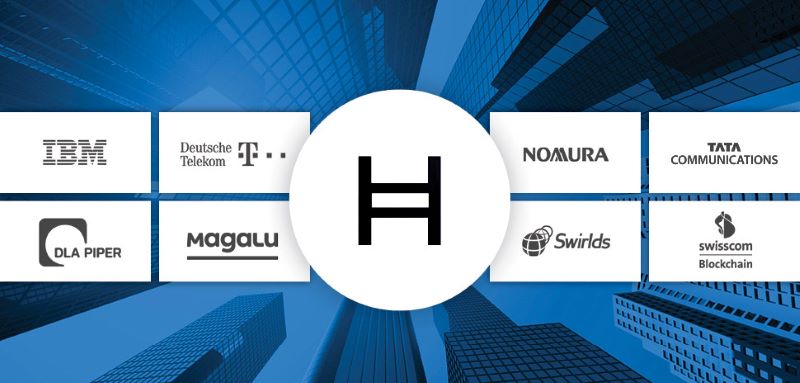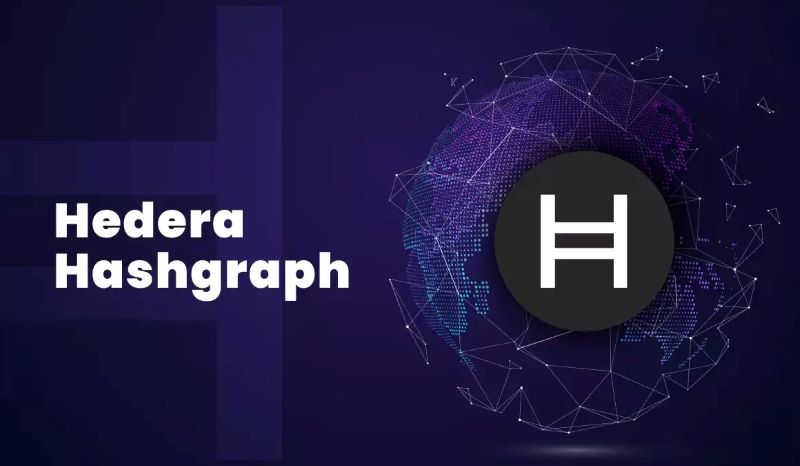Hashgraph Consensus Unveiled: Revolutionizing Trust in Technology
Ever feel like there’s a gap between the promise of tech and actual trust? Hashgraph consensus fills that void. It’s not just another geeky term to glaze over. Imagine a digital world where every move is fast, fair, and rock-solid secure. That’s the promise of this new tech player. While blockchain buzz dominated our feeds, hashgraph has been silently plotting its world takeover. It’s a game where everyone can win – but how? Buckle up, because we’re peeling back the layers of jargon to show you exactly how this underdog could outpace its blockchain cousins. Ready for a dive into a future where technology means trust? Let’s get moving!
Deciphering Hashgraph: Beyond Blockchain
Exploring the Core of Hashgraph Technology
Let’s dive into hashgraph technology. People often ask: What is hashgraph? It’s a new kind of distributed ledger. Unlike usual blockchains, it’s super fast and very secure. It lets computers agree on shared data. And it does this in a way that’s quite different from the past.
Leemon Baird made hashgraph. He wanted to solve problems he saw in blockchain tech. You see, blockchains can be slow and bulky. Baird thought, “We can do better.” So, hashgraph came to be. It uses something smart called DAG consensus model. It stands for Directed Acyclic Graph. This just means it works like a web. Not a line like old blockchains.
Hashgraph can handle many transactions at once. That’s called scalability. It’s a big win for businesses. It means they can grow and still use this tech without hiccups.
Addressing the Gossip About Gossip Protocol
Now, onto the gossip about gossip protocol. Gossip here isn’t about rumors. It’s tech talk for how hashgraph shares information. It’s like friends telling each other news fast. Each computer, or node, talks to a few others. Just a little chat. But in no time, everyone knows the full story.
So, why the fuss about it? It’s because this chat method is pretty clever. It’s quick at spreading the latest transactions to the whole network. It uses less power and cuts down on wasted time.
Gossip about gossip is only the start. Hashgraph has another trick. It’s called the virtual voting mechanism. Think about how you need trust to vote. The thing is, voting can take time. But hashgraph does it without the wait. It’s like if everyone voted at the same time without fuss. That means fast decisions on what’s okay and what’s not.
Blockchain vs hashgraph? Hashgraph might win that race. It’s got the speed and the smarts. That’s why it’s great for things like finance apps. They need to be right and fast. Hashgraph can help with that. Plus, it handles smart contracts too. These are agreements that live on the computer. They follow the rules you set without anyone having to check.
In hashgraph, trust is key. And it’s built on strong math and science, so you can count on it. Companies are looking at this for the future. They’re thinking about how to use it for their needs.
Believe it or not, hashgraph has answers to many tech headaches. It’s a game-changer that’s just starting to show what it can do. And that’s something to get excited about. We’re talking about a tech that doesn’t just keep up but sets the pace for innovation.
The Mechanics of Consensus in Hashgraph
How Virtual Voting Powers Trust
Imagine everyone knows what everyone else knows. This is key to hashgraph. When data spreads this way, we call it gossip. But the true magic is in virtual voting. Here’s how it works. Every member, called a node, shares new info with a random other node. We don’t vote like usual. Instead, we use math to figure out how nodes would vote. It’s virtual voting and it’s fast.
With virtual voting, trust rises. Each node has a voice in deciding what’s true and what’s not. This means we’re all in it together to keep our data safe and correct. Thanks to this, hashgraph is great for things that need trust, like money or private messages.
Comparing DAG and Blockchain Structures
People often mix up blockchain and hashgraph. They’re both ways to agree on data, but they work differently. Blockchain is like a chain of blocks, one after another. Each block has data and they link back to the start. Hashgraph doesn’t use blocks or a chain. Instead, it’s like a web. We call this web a DAG, which stands for directed acyclic graph.
In a DAG, things move faster than in blockchain. This is because there’s no waiting for new blocks. Data can spread in many ways at the same time. Hashgraph also uses less power, making it a friend to our Earth. And when it comes to agreement, hashgraph is often quicker because of gossip and virtual voting.
In the end, both have their uses. But hashgraph stands out for handling lots of info fast and with high trust. It’s changing how we keep data safe and work together, no matter who or where we are.
Hashgraph in Action: Enterprise and Cryptocurrency
Deployment of Hashgraph in Business Scenarios
Hashgraph technology is a game changer for businesses. Its trust model is simple. It’s like a game, where everyone tells others what they know. This ensures everyone is on the same page. Hashgraph’s virtual voting makes this possible without everyone voting. It’s like having a secret way to know the vote without asking.
But it’s not magic; it’s math and science. Picture a web where each thread is a chat. Now imagine these chats weave over and under, making a strong net. That’s hashgraph for enterprise. It holds a lot of data like a sturdy net holds a lot of fish. Companies love this because it’s not only strong, but also fast.
Let’s get into hashgraph efficiency and speed. A big deal here is the gossip about gossip protocol. Every computer in the network gossips. They share what they know. Like kids whispering in class, but for useful stuff. And it’s fast. Way faster than regular blockchains.
Now, about hashgraph security features. They’re tough. The system fights off bad actors.
Think of being on a playground with a friend who always plays fair. That’s the hashgraph network. It makes sure no one cheats on the virtual playground of data.
Plus, there’s the bonus of hashgraph scalability. This means it can grow. Think of a town growing into a big city. Hashgraph can handle that kind of growth. So businesses can get bigger without worry.
The Role of HBAR in Hedera’s Ecosystem
HBAR is the heart of the Hedera Hashgraph system. It’s the energy that powers everything. Imagine having a superpower to move things just by pointing. HBAR does that, but for digital stuff.
When people talk about what is hashgraph, they often mean Hedera Hashgraph. It uses HBAR for all its tasks. HBAR helps to keep things safe in the network. You can use it to pay for services, and it’s like a key. You need it to unlock and use the system.
The Hedera token service works with HBAR. It’s like having tickets for a fair. But these tickets can become anything. A ticket could mean a coin, a game, or even a vote. This is part of the consensus algorithm.
Byzantine Fault Tolerance is a big word. But think of it as a trust rule. It means even if some computers are bad, you can still trust the network. It’s like having a group project where some kids are sick. The project still gets a good grade. That’s because the system keeps working well.
In the end, HBAR cryptocurrency is key. It’s the little engine that keeps this digital train moving. It pays for transactions and keeps things running smoothly, fast and fair.
So, there we have it. Hashgraph in business is big news. It makes things quick, safe, and reliable. It’s changing how we think about trust in technology. And with HBAR, Hedera Hashgraph runs like a well-oiled machine.
Hashgraph’s Future in a Decentralized World
Enhancing Data Integrity Through Hashgraph’s Unique Security Features
Imagine a world where your data is safer than ever. That’s what hashgraph technology promises. With features like gossip about gossip and virtual voting, hashgraph keeps our information secure. Gossip about gossip spreads data fast and wide. Virtual voting then checks that data without real votes. It’s like everyone whispering secrets, then nodding in agreement.
Now, folks often ask: What is hashgraph really good at? The simple answer is security. No one can mess with hashgraph’s data after it’s agreed on. It’s fixed, like words carved in stone. This is because of something called Byzantine Fault Tolerance. Even if some nodes in the network go bad or run into errors, hashgraph stays strong. The chance to trick the system? Almost zero.
Hashgraph’s security is like a lock with too many keys to count. It’s hard to break. And that’s just the start of how it keeps things in order. By spreading information fast, it outpaces hackers. Imagine trying to run while juggling; that’s hackers trying to beat hashgraph. These safety tricks make hashgraph a good pick for banks and big companies. They love keeping data safe as much as you love ice cream on a hot day.
Scalability and Real-World Applications: A Look Ahead
Now let’s talk size – hashgraph can handle a lot. This is thanks to how it grows. With sharding, the network can split and still work as one. This is like a team working on a big puzzle. Each member works on a part, but they’re all making one picture. That’s hashgraph’s way to deal with more action without slowing down.
The future’s bright for using hashgraph in the real world. We’re not just talking about tech nerds loving it. It’s for anyone who needs to move or keep track of things. Banks, health care, games – all can use hashgraph. They need speedy, safe ways to handle tons of data. And hashgraph delivers.
For example, in finance, trades and payments must be quick and sure. Hashgraph can do this with ease and for less cost than old methods. It opens doors for creative new services. Imagine paying for coffee with a click, no waiting. That’s hashgraph in action.
We also see hashgraph in things like smart contracts. These are deals that live on the computer and work on their own. Hashgraph helps them run smoothly. It cuts out middlemen and saves time and money.
So, when we look ahead, what do we see for hashgraph? More use in our lives, for sure. We’ll benefit from its strengths – speed, cost, and a trusted network. It’s not just about tech speak and fancy terms. It’s about making life easier and safer. And that’s something to get excited about.
We dove deep into Hashgraph and its unique tech. We saw how gossip about gossip and virtual voting build a new trust layer. Unlike blockchain, Hashgraph uses a DAG structure for faster, fairer decisions.
In business, Hashgraph shines, with big names already on board. Its currency, HBAR, keeps Hedera’s world running smooth.
Looking ahead, the security and scale of Hashgraph could change our digital lives. It’s not just tech talk; it’s a path to a world where everyone shares data without worry.
I’m excited to see how Hashgraph will shape our future. It’s clear: This tech is not just new; it’s a game-changer. Keep an eye on this space – Hashgraph’s journey has only begun.
Q&A :
What Is Hashgraph Consensus and How Does It Work?
Hashgraph consensus is a distributed ledger technology that offers a different approach to blockchain. It uses a protocol called ‘gossip about gossip’ which allows quick, fair, secure, and efficient consensus within a network. Each node in the hashgraph can quickly spread information on transactions to other nodes, and through a virtual voting mechanism, they can achieve consensus without the need for proof-of-work or proof-of-stake.
How Is Hashgraph Consensus Different from Blockchain?
Unlike the linear structure of blockchain, hashgraph has a directed acyclic graph, allowing for multiple branches that can merge, facilitating faster transactions and higher throughput. It also differs in terms of consensus mechanisms, using virtual voting which is more efficient than the mining process used in blockchains like Bitcoin, therefore it also aims to be more energy-efficient.
What Are the Advantages of Hashgraph Over Blockchain?
Hashgraph claims several advantages over traditional blockchain technology, including improved speed due to its gossip protocol that enables faster spreading of information. It’s also purported to be more secure due to the asynchronous Byzantine Fault Tolerance, and it promises to be fairer by ensuring that the order of transactions is one that all agree on and cannot be easily manipulated.
Can Hashgraph Consensus Scale Better Than Blockchain?
Hashgraph’s architecture allows for significant improvements in scalability compared to many blockchain solutions. Its gossip protocol and consensus algorithm enable fast and efficient consensus with no direct limit on the number of transactions per second, which makes it highly scalable and well-suited for a range of applications requiring high throughput.
Is Hashgraph Consensus More Energy Efficient Than Blockchain?
Yes, hashgraph consensus can be more energy-efficient than traditional blockchain consensus mechanisms like proof-of-work due to the lack of computationally intensive mining processes. By using the gossip about gossip protocol and virtual voting for consensus, it reduces the energy consumption that is typically associated with the mining aspect of traditional blockchains.



